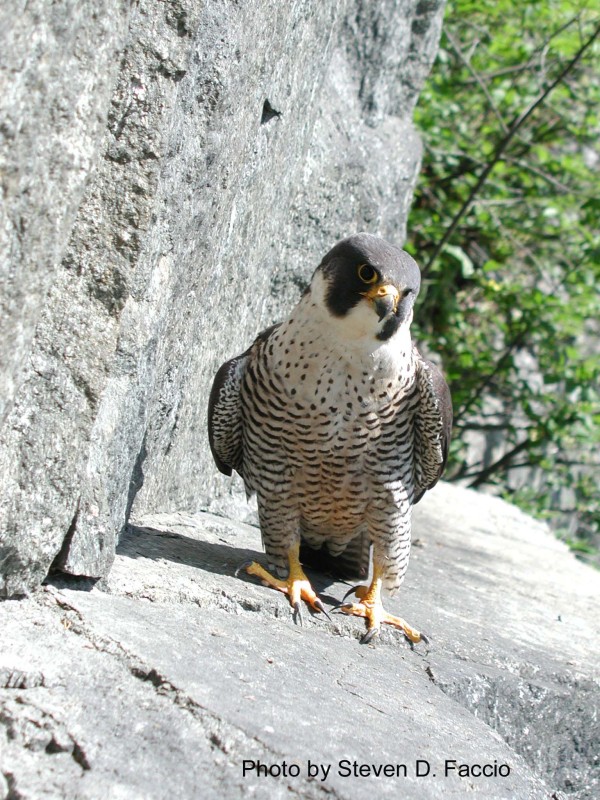Hiking Vermont’s hillsides is a great way to enjoy a spring day, but the Vermont Fish & Wildlife Department and Audubon Vermont recommend checking to see if the area you’re planning to hike or climb is open. Several cliff areas are currently closed to protect nesting peregrine falcons.
“Peregrine nesting is well underway this spring,” said John Buck, Vermont Fish & Wildlife Department biologist. “The falcons are very sensitive to human presence so we ask climbers and hikers to please avoid the nest sites with a respectful distance. The closures help people to choose an alternative route in advance.”
Closed Areas
- Barnet Roadcut (Barnet) – Rte 5 pullout closed
- Bolton Notch (Bolton) – Upper Upper West cliff closed to climbing
- Bone Mountain (Bolton) – portions of cliff closed to climbing
- Deer Leap (Bristol) – closed
- Eagle Ledge (Vershire) – cliff access closed
- Fairlee Palisades (Fairlee) – cliff top closed
- Hazens Notch (Lowell) – portions of cliff closed to climbing
- Marshfield Mt (Marshfield) – portions of cliff closed to climbing
- Mt. Horrid (Goshen) – Great Cliff overlook closed
- Nichols Ledge (Woodbury) – cliff top closed
- Rattlesnake Pt (Salisbury) – cliff top closed
- Snake Mountain (Addison) – overlook south of pond closed
“The areas closed include the portions of the cliffs where the birds are nesting and the trails leading to the cliff tops or overlooks,” said Buck. “We will update the closure list as more nesting data are reported.”
The Vermont Fish & Wildlife Department partners with Audubon Vermont to monitor the sites throughout the nesting season. These sites will remain closed until August 1, but if a falcon pair doesn’t nest or if the nest is not successful, the sites will be reopened sooner.
Last year was a respectable nesting season for Vermont’s peregrine falcons, with more than 51 pairs successfully producing at least 63 young birds.
“We appreciate the public’s support in respecting the cliff closures,” said Buck. “The peregrine falcon was removed from the endangered species list in 2005 — due, in part, to people respecting the falcon’s nesting period.”
You can report Peregrine Falcon sightings to Vermont eBird, a project of the Vermont Atlas of Life.

